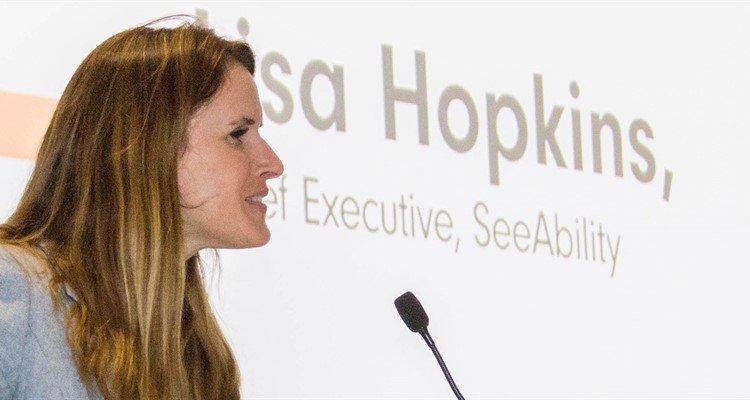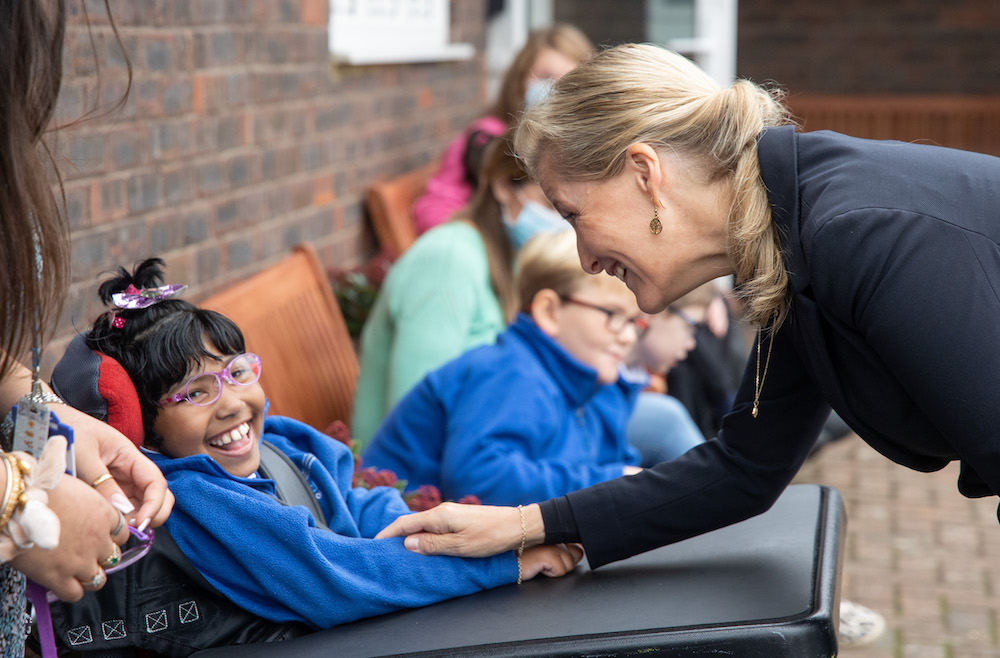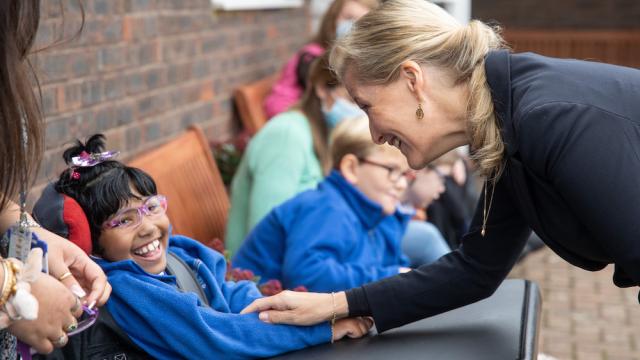
Focusing the world’s attention
A blog by SeeAbility CEO Lisa Hopkins
Today is World Sight Day and I’m thrilled to be writing this blog having had the pleasure of hosting HRH The Countess of Wessex and the International Agency for the Prevention Blindness (IAPB), to see our work providing sight tests in special schools in action. The Countess is global ambassador and Royal Patron for IAPB, who organised the day to draw attention to the need for better access to eye health services, with this year’s theme of #LoveYourEyes.

Across the globe we know there are millions of people that seldom get the chance of a sight test. Many are people with learning disabilities who, in the ultimate catch 22, experience disproportionately high levels of sight problems from birth to older age. How we can be in this situation still perplexes me.
For people with more severe learning disabilities, research tells us that they will more likely than not have a vision problem – such is the extraordinary prevalence. But recognising and diagnosing sight problems can be more difficult than it is with other patients. Here in the UK we know that thousands of people with learning disabilities are missing out on simple, low cost eye care that could transform their lives and save their sight. 50% of sight loss in the UK is avoidable, and much of this is just down to people not having the glasses they need.
For many years now SeeAbility has dedicated huge efforts to addressing the vision issues experienced by people with learning disabilities. Today on World Sight Day, it is worth reflecting on progress we have made, but also to restate our strategic ambitions and commitment to help transform eye care for people with learning disabilities. Our passion is making inclusion a reality and helping people to be able to see is a huge part of that.
Where there has never been a plan to meet the eye care needs of those with learning disabilities, we are now seeing change. That NHS England, the national commissioner for sight tests, is grasping this nettle through the creation of a nationwide Special Schools Eye Care Service is wonderful and commendable (and it seems a first globally, too!). Free training is now available to any optometrist and dispensing optician who wants to be part of that service or improve their care for people with learning disabilities in the community. New teams of eye care professionals working in special schools tell us this is some of the most wonderful, life changing work they have ever done, and are taking this experience back to their practices in the community too.
Awareness is on the increase, with our eye care champions program, employing people with learning disabilities, autism and sight loss, reaching out on the ground (and of course virtually too!) to many thousands of people with learning disabilities, their supporters and professionals with the message of being ‘eye care aware’. A new NHS funded parents' guide to eye care for children with learning disabilities, autism or both, is now available, and wherever you are in the world, SeeAbility’s easy read information about eye tests, wearing glasses and eye problems are all there, freely available to download.
None of this would have been possible on our own, and we are so thankful for the ongoing support and partnership of so many individuals, organisations and funders on this journey.
Yet there is so much more to do. Only this week reports have highlighted how the pandemic has had a devastating impact on the health inequalities people with learning disabilities experience, while children with Special Educational Needs and Disabilities still haven’t got back the vital therapies and healthcare support they need. Hospital eye clinics are the busiest they have ever been, with waiting lists growing. This is the time to be ambitious and aim for total eye care transformation, so children and adults with learning disabilities get the sight tests and preventative eye care they need, in addition to children who attend special schools. As health and social care morph into new Integrated Care Systems, the opportunity of a community eye care pathway for people with learning disabilities, in every area, should be taken.
It’s time for all people with learning disabilities to get the eye care they need, which can help them achieve their potential and ambitions. This is the world that I want to live in where we all have equality and, in this case, an equal right to sight.


